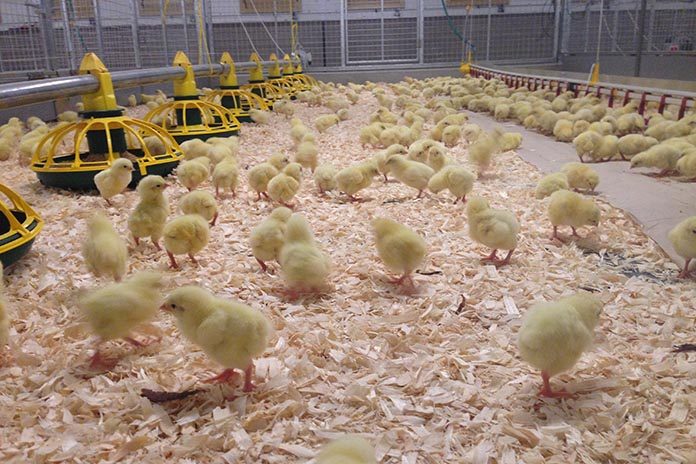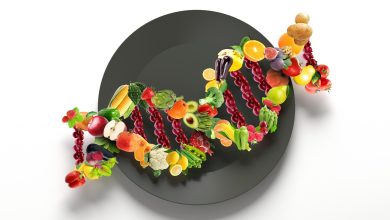NON STARCH POLYSACCHARIDES IN POULTRY FEEDING

Harshit Saxena
College of Veterinary Science and A. H., DUVASU,
Mathura- 281001 (U.P.)
NON STARCH POLYSACCHARIDES IN POULTRY FEEDING
For any commercial livestock enterprise feeding strategies play a crucial role in determining the returns. Feed contribute about 70% of total expenses required for rearing of a poultry bird in general. The concept of Phase feeding is much popularized which focuses on feeding of different quantity of nutrients with different stages of life/specie/breed/commercial type (broiler/layer/pets).
The major constraint associated to poultry feeding is consistent increases in prices of various feedstuffs thus as a consequence cheaper and non conventional feed ingredients have to be used which contain higher % of NSPs (soluble and non soluble crude fibre) along with starch complexed with them.
Feeding of these NSPs on a minimal amount may produce beneficial results but there excess feeding is problematic often.
Non starch polysaccharides (NSPs) are polymeric carbohydrates which differ in composition and structure from starch and possess chemical cross linking among them therefore, are not well digested by the poultry birds. They include cellulose, pectins, gums, glucans, inulin, chitin exclude lignin.
Dietary fibre should be defined for the purpose of food labelling as NSPs since this give best index of plant cell wall polysaccharides, is precisely measurable and is in keeping with the original concept of dietary fibres.
Chemically these NSPs have been Classified into three groups
- Cellulose– Sole component of Plant cell wall consisting of beta 1,4 glycosidic bonds
- Non cellulosic polysaccharides – Encompasses numerous polysaccharides which were traditionally under the term hemicelluloses because these polysaccharides could’nt be extracted together include Arabinoxylans(Pentosans), mixed linked with beta Glucans, Mannanas, Galactans, Xyloglucans and Fructosans
- Pectic polymers/Polysaccharides– consist mainly of Polygalacturonic acid substituted with Arabinan Galactan and Arabinogalactan.
Some other scientists Classified them into Water Soluble and Water Insoluble fractions which delineate their functions and chemical structures and is perhaps the most pivotal classification in context to Poultry feeding.
Soluble NSPs : Soluble portion of NSPs in viscous cereals- Rye, Wheat, Barley, Oat, Triticale increases intestinal viscosity and thereby interfere with the digestive processes and exert strong negative effects on nutrient utilization.
Being more susceptible to biological hydrolysis, especially in the last component of bird’s GIT such as Caecum with the increased viscosity of feed digesta passage rate being slower reducing feed intake and digestibility. It causes modification of gut physiology that results in enlargement of the GI tract which then reduces the formation of enzyme substrate complex is hindered to decrease surface area compared to volume. And also exposure of digested feed /simple absorbable forms cannot be made hindering absorption.
Soluble NSPs also reduce blood and body cholesterol as soluble NSPs hinder the action of bile on digesta thus most bile is excreted out of body. Thus to compensate it more bile salts produced by metabolising the cholesterol. Liver increases its LDL receptors thus further absorbing cholesterol from blood lowering the cholesterol level of animal body. The concept being exploited for production of lean meat in broilers upto an extent.
Insoluble Non starch polysaccharides : Constitute major portion of diet. They affect gut functions and modulate nutrient digestion. Present in non viscous cereals in more quantity like corn, sorghum, rice, millet they increase digestibility of starch and digesta passage rate and thus better gut motility. The effect of insoluble fibre on gut functions stems form its ability to accumulate in the gizzard, which seems to regulate digesta passage rate and nutrient digestion in the intestine.
Thus it can be drawn out from the above discussion that NSPs can’t be degraded by endogenous enzymes / actions and thus reach to colon almost undigested in spite of being having a good reserve of nutrient particularly the complexed Starch. They possess a sort of Anti nutritional property by either encapsulating nutrients or by depressing overall nutrient digestibility through GIT modification.
Benefits of NSPs :without giving treating with any Additive like Enzyme etc..
- Soluble NSPs have cholesterol lowering effects.
- Insoluble NSPs provide better passage rate and gut motility and hence good nutrient absorption.
Impediments of NSPs:
- Soluble NSPs – Increase viscosity decrease digestion and passage rate decreasing absorption of nutrients.
- Non soluble NSPs –Encapsulate all other nutrients rendering them undigested. Very high level of NSPs as non soluble part may cause pathogenesis of gut mucosa and may give way to secondary bacterial infections. Inflammation of renal and GIT lining compromises water and nutrient transfer which increase the amount of water, mucus and non digested nutrients in the excreta.
Poultry feed ingredients and NSPs : NSP content in the feed grains can represent almost 25% of total dry matter content of poultry feed. On basis of above classification cereals are classified into-
- Viscous cereals : Rye Wheat Barley Oat Triticale
- Non viscous cereals: Corn Sorghum Rice Millet
NSP content of corn, wheat, barley and rye is primarily composed of Arabinoxylans. Soybean has diverse range of NSPs. Rice bran is rich in Arabinoxylans and cellulose. Differential concentration of various NSPs is Arabinoxylans the most – 50% of total followed by cellulose 25% and beta glucans 5%. It is seen that a typical broiler diet containing 60% corn and 30% Soybean meal is dominant at 43% followed by cellulose at 27%. In diet having 60% wheat and 30% soybean meal has Arabinoxylans 47% and cellulose 23%.
Use of enzymes in mitigating the ill effects of NSPs and increasing nutrient utilization is much popularized in recent years. Because the concentration of Arabinoxylans is most prevalent NSPs (43-47% in broiler) therefore inclusion of high quality Xylanase works by two mechanisms of action one by breaking down the component of cell wall which release encapsulated nutrients. Reducing digesta viscosity increases passage rate. Overall endogenous enzymes provide improved access to nutrients and reduce bacterial proliferation in small intestine. For cellulose no enzyme till date is available that could efficiently and cost effectively release glucose from cellulose. Xylanase reduces GIT length duodenal (2.9 v/s 1.7) ileal(14 v/s 3.9) jejunal(4.6 v/s 2.3) & AME(P<.01) of wheatand starch digestion (P<.5) in jejunum and ileum. It is hypothesized that single enzyme act better than multiple ones.
Xylamax is one such commercially available enzyme that is chemically an endo 1,4 beta xylanase that releases 130kcal ME/kg of corn based diet and 150 kcal ME/kg in wheat diet. It is GH11 xylanase that hydrolyses both soluble and insoluble xylans, maximizing release of nutrients from feed grains, it is developed to function at peculiar pH of 5.7-7.0 of poultry’s small intestine where major digestion occur. Accelerate digestion by reducing digestion viscosity and increase passage rate. It also improves gut health, lessens pathogen, lessen necrotic lesions, increase villi height, reduced mucosal MDA (indicator of oxidative stress), pre-biotic effect, FCR improved by 4-6 points, Improvement of average bird finished weight and flock uniformity,Thermostable during pelleting at 85degree celsius.
Knowledge of NSPs allow us to use Non conventional feeds in efficiently increasing profit however proper knowledge about their anti-nutritional must be there .Use of enzyme like Xylanse glucanse etc.. in poultry feed is thus of much importance in commercial poultry rearing as this could substantially reduce the rearing cost and make the business overall more profitable.




